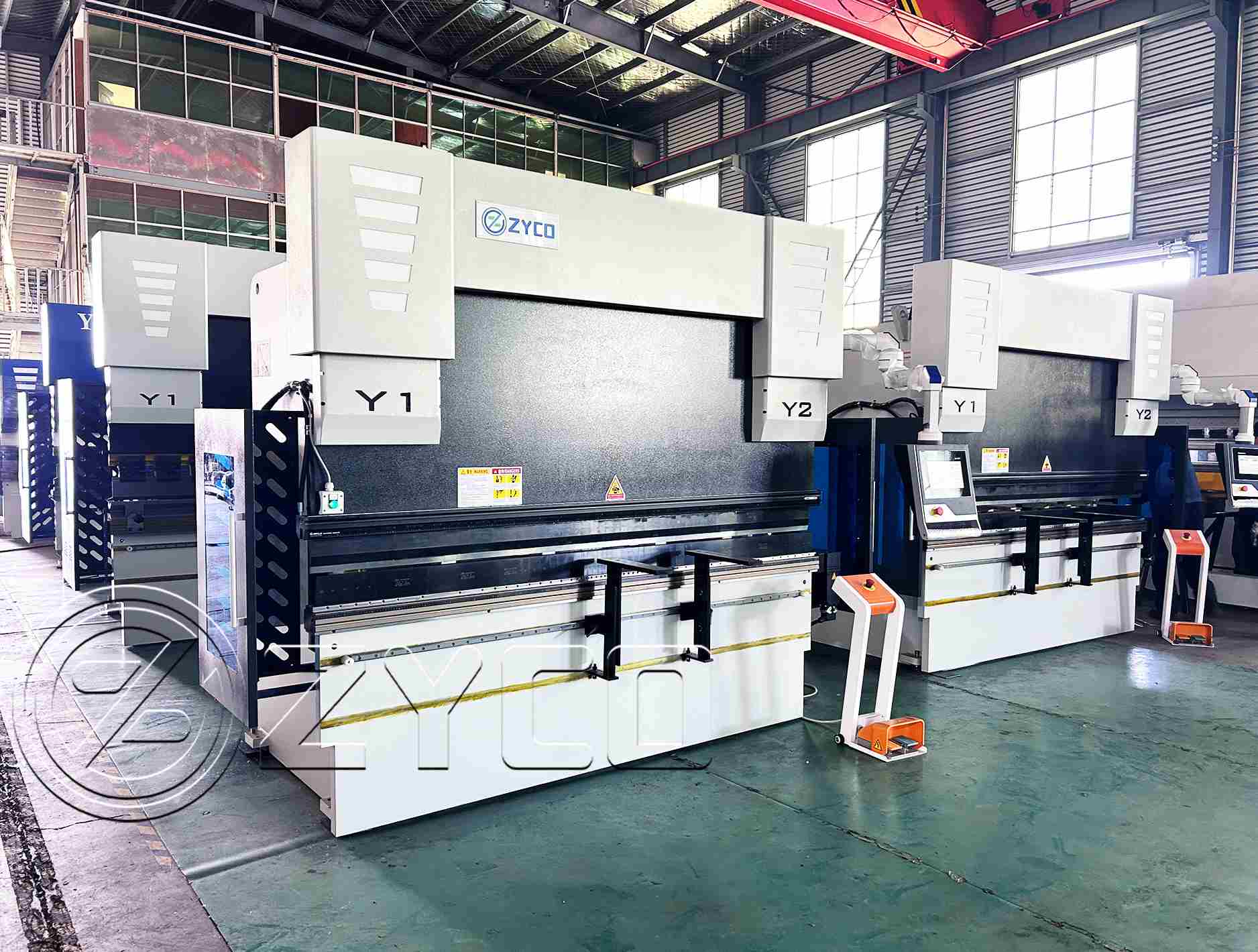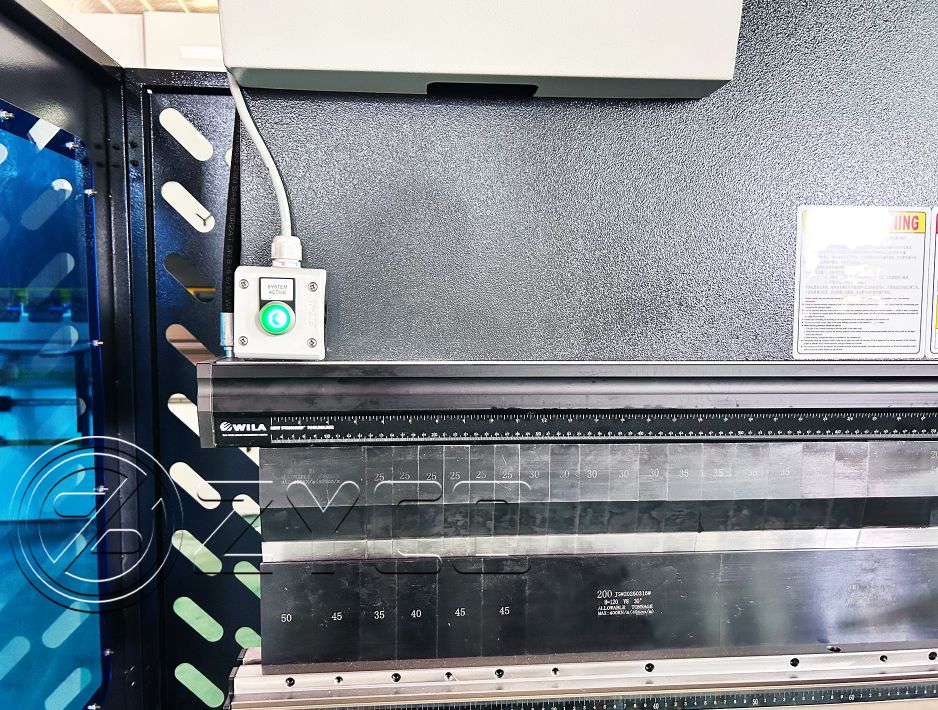No campo do processamento de chapas metálicas, o desempenho de uma dobradeira determina diretamente a precisão e a eficiência da conformação do produto. Com a crescente demanda por peças complexas de chapa metálica na indústria, a tecnologia de fixação hidráulica, graças às suas vantagens únicas, tornou-se gradualmente a configuração central da indústria. máquinas de dobra de alta qualidade. Desde componentes de precisão na indústria aeroespacial até caixas de baterias para veículos de nova energia, sistemas de fixação hidráulica, com seus desempenho estável, adaptabilidade flexível e recursos de controle inteligentes, fornecer soluções totalmente novas para a manufatura moderna.
I. Revolução de Precisão: Garantia Essencial de Estabilidade em Nível de Mícron
Tecnologia de fixação hidráulica, acionado por bombas de óleo de alta pressão, permite ajuste de pressão contínuo de 0,1 a 40 MPa, com precisão de resposta dinâmica atingindo ±0,5%. Ao contrário da fixação mecânica tradicional, que sofre com folgas nas engrenagens e desgaste das roscas, o sistema hidráulico compensa continuamente as flutuações de pressão durante o processo de dobra por meio de controle de feedback em malha fechada. Por exemplo, quando uma empresa de eletrônicos de precisão processava carcaças de liga de alumínio de 0,8 mm, a fixação hidráulica reduziu o erro de ângulo de dobra de ±1.2° para ±0,3°, e a taxa de qualificação do produto aumentou para 99,6%.
A tecnologia de aplicação de pressão balanceada multicilindros aprimora ainda mais a consistência do processamento. Por meio de sensores de pressão distribuídos e controle por algoritmo PID, o sistema equilibra automaticamente as diferenças de força em cada ponto de fixação. Um fabricante de equipamentos ferroviários, ao processar os painéis laterais de vagões ferroviários de alta velocidade, obteve um erro de retilinidade inferior a 0,05 mm/m para chapas metálicas de 15 metros de comprimento por meio de fixação hidráulica, atendendo plenamente aos requisitos aerodinâmicos para operação em alta velocidade..

II. Salto de Eficiência: O Acelerador da Produção Inteligente
A velocidade de resposta dos sistemas de fixação hidráulica é de 3 a 5 vezes maior do que a das estruturas mecânicas, com o tempo de abertura e fechamento de suas válvulas servoproporcionais levando apenas 30 a 50 milissegundos. Em linhas de produção automatizadas, essa capacidade de resposta de alta velocidade reduz o tempo de troca de molde para 45 segundos. Após uma determinada empresa de eletrodomésticos adotar o sistema de fixação hidráulica inteligente, ela atingiu uma produção contínua de 6.000 suportes de ar-condicionado por dia, com um aumento de 27% na eficiência geral do equipamento (OEE).
Sua profunda integração com a Internet das Coisas industrial abriu caminho para um novo modelo de operação e manutenção remotas. Por meio do módulo de monitoramento de pressão integrado e da tecnologia de comunicação 5G, os engenheiros podem obter parâmetros-chave, como curvas de força de fechamento e variações de temperatura do óleo, em tempo real. Uma empresa de máquinas para construção reduziu o tempo de inatividade dos equipamentos em 65% e previu 92% das falhas do sistema hidráulico com antecedência por meio da análise de dados em nuvem..
III. Adaptabilidade de Processos: Um Agente Versátil para Materiais Diversos
Com uma faixa de processamento que vai de aço inoxidável ultrafino de 0,3 mm a chapas de aço blindado de 50 mm, o sistema de fixação hidráulica demonstra notável compatibilidade. Através da correspondência inteligente com o banco de dados de materiais sob pressão, os operadores precisam apenas inserir o tipo e a espessura do material, e o sistema gera automaticamente a solução de fixação ideal. Quando uma empresa militar processava chapas à prova de balas de liga de titânio, o recurso de aplicação de pressão flexível da fixação hidráulica evitou com sucesso a formação de microfissuras na superfície do material..
Em cenários complexos de aplicação de moldes, sua função de controle independente multiponto resolveu o problema de fixação de peças com formato irregular. Por exemplo, em uma determinada linha de produção de caixas de baterias de nova energia, por meio de um sistema de controle hidráulico de 16 canais, foi obtido o encaixe preciso do molde ondulado, melhorando a precisão da conformação por dobra. ±0,1 mm, reduzindo o desgaste do molde em 40%.

4. Segurança e eficiência energética: escolhas verdes para uma fabricação sustentável
O mecanismo de proteção contra sobrecarga do sistema de fixação hidráulica pode monitorar o estado da força de fixação em tempo real. Quando a pressão excede o limite, ele inicia automaticamente o procedimento de alívio de pressão. Dados estatísticos de uma determinada fábrica de autopeças mostram que essa função evita aproximadamente 120 acidentes com colisões anormais de moldes a cada ano e reduz os custos de manutenção do equipamento em 35%.
A aplicação de estações de bombeamento hidráulicas de baixo consumo de energia reduziu significativamente o consumo de energia. Após a adoção de motores de frequência variável trabalhando em conjunto com acumuladores, o monitoramento do consumo de energia em um centro de processamento de metais mostrou que o consumo de energia em modo de espera do sistema hidráulico diminuiu 78%, com uma economia anual de eletricidade superior a 120.000 quilowatts-hora, o equivalente a uma redução de 96 toneladas nas emissões de carbono.
Impulsionada pela manufatura inteligente e pela manufatura verde, a tecnologia de fixação hidráulica está evoluindo de um mero atuador para uma unidade inteligente de tomada de decisão. Ela não apenas redefine os padrões de precisão do processamento de dobra, mas também impulsiona continuamente a inovação tecnológica na área de conformação de metais por meio da interconexão de dados e da otimização de processos. Para empresas que buscam qualidade superior e produção eficiente, os sistemas de fixação hidráulica não são mais apenas uma opção técnica, mas um caminho inevitável para a fabricação de ponta..
Deixe seu endereço de e -mail e requisitos, nossa equipe de vendas profissional desenvolverá a solução mais adequada para você.
Direitos autorais
© 2025 Nanjing Zyco CNC Machinery Co., Ltd. Todos os direitos reservados
.
 SUPORTADO POR REDE
SUPORTADO POR REDE